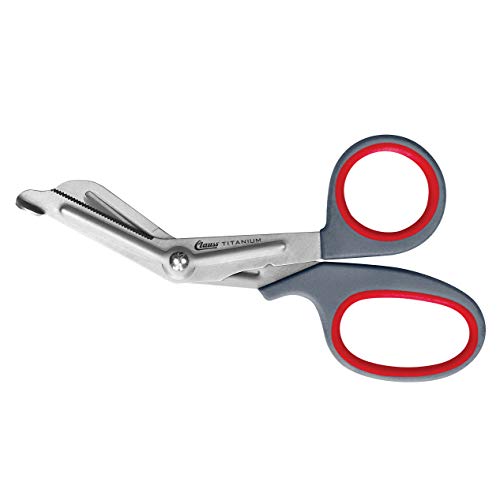Nippers: Essential Tools for Precision Cutting

- 1. Nippers: Essential Tools for Precision Cutting
- 1.1. Types of Nippers
- 1.1.1. Diagonal Cutting Nippers
- 1.1.2. End-Cutting Nippers
- 1.1.3. Long-Nose or Needle-Nose Nippers
- 1.1.4. Tile Nippers
- 1.1.5. Glass Nippers
- 1.2. Applications of Nippers
- 1.2.1. Electronics and Electrical Work
- 1.2.2. Construction and Carpentry
- 1.2.3. Jewelry Making
- 1.2.4. Plumbing
- 1.2.5. Mosaic and Tile Work
- 1.3. Key Features to Consider
- 1.3.1. Material
- 1.3.2. Cutting Edge Design
- 1.3.3. Handle Design
- 1.3.4. Joint Type
- 1.3.5. Size Matters
- 1.4. Conclusion
- 1.1. Types of Nippers
Nippers play a crucial role in a variety of industries and DIY endeavors, renowned for their capacity to execute precise and neat cuts. Whether you're dealing with wires, metals, or diverse materials, nippers offer a methodical and effective means to trim, shape, and manipulate objects. Within this extensive manual, we will immerse ourselves in the realm of nippers, examining their diverse types, applications, and essential characteristics.
Types of Nippers
Diagonal Cutting Nippers
Also known as side-cutting or diagonal pliers, these nippers are equipped with angled cutting edges. This design makes them particularly adept at flush cutting and navigating into tight spaces. Widely employed in electrical work, jewelry making, and general wire cutting, diagonal cutting nippers offer precision and versatility.
End-Cutting Nippers
End-cutting nippers, characterized by flat cutting edges perpendicular to the tool's handles, excel at making flush cuts. Carpenters and woodworkers frequently rely on these nippers for tasks such as trimming protruding nails or wire ends. The design ensures a clean and seamless cut, making them indispensable in woodworking applications.
Long-Nose or Needle-Nose Nippers
Featuring elongated and pointed jaws, long-nose nippers are invaluable when it comes to reaching into confined areas. This type of nipper is ideal for tasks like bending, twisting, and gripping in electrical and electronic applications. The precision offered by their design makes them an indispensable tool for intricate tasks that demand a delicate touch.
Tile Nippers
Tailored for the specific task of cutting ceramic tiles, tile nippers boast carbide-tipped jaws. This specialized design allows for precise shaping and trimming of tiles, making them an essential tool in the arsenal of tile craftsmen and DIY enthusiasts alike. The durability of the carbide tips ensures longevity and efficiency in tile-cutting applications.
Glass Nippers
Engineered for working with glass, glass nippers feature serrated jaws that facilitate a clean and controlled break. Whether shaping glass for artistic endeavors or precise fitting in construction projects, these nippers offer the necessary precision and control. Glassworkers and artisans appreciate the finesse these tools bring to their craft.
Applications of Nippers
Electronics and Electrical Work
Diagonal cutting nippers are indispensable in the realm of electronics and electrical work. These nippers excel in trimming wires and leads in electronic circuits and electrical installations. Their precision and sharp cutting edges make them a preferred tool for ensuring accurate cuts in delicate components.
Construction and Carpentry
In carpentry, end-cutting nippers emerge as valuable tools for cutting and shaping nails or wires close to the surface. Carpenters rely on these nippers for their ability to provide clean and precise cuts, especially when working on intricate woodwork projects. The efficiency of end-cutting nippers enhances the overall quality of carpentry work.
Jewelry Making
Jewelers appreciate the significance of diagonal cutting nippers in their craft. These nippers offer the precision required for cutting wires, chains, and other delicate components in jewelry making. The fine control provided by diagonal cutting nippers ensures that jewelers can create intricate designs with accuracy and finesse.
Plumbing
In the field of plumbing, long-nose nippers prove to be invaluable. Their design allows for easy gripping and manipulation of small components in tight spaces. Plumbers rely on long-nose nippers for tasks that demand precision, such as securing or adjusting small fittings in confined areas where other tools might not be as effective.
Mosaic and Tile Work
For mosaic and tile work, specialized tile and glass nippers are essential tools. These nippers facilitate the shaping and fitting of ceramic tiles and glass pieces with precision. Whether creating intricate mosaic designs or ensuring a seamless tile installation, tile and glass nippers contribute to the accuracy and efficiency of the overall process.
Key Features to Consider
Selecting the appropriate nippers, alternatively referred to as diagonal cutting pliers or wire cutters, is crucial for a variety of tasks, particularly in fields such as electrical work, jewelry making, and other applications. Below are essential features to take into account when choosing nippers:
Material
One of the fundamental aspects to consider when choosing nippers is the material they are made of. High-quality steel or alloys are the preferred choices for durability and longevity. These materials ensure that the nippers can withstand the rigors of cutting tasks without succumbing to wear and tear, providing a reliable tool for years to come.
Cutting Edge Design
The design of the cutting edges is a critical factor that directly influences the performance of nippers. Different models offer various cutting edge designs, including beveled edges for enhanced precision and flush cutting capabilities. Beveled edges are particularly useful for tasks that demand accuracy, allowing users to make clean and precise cuts without unnecessary fraying or damage to the material.
Handle Design
Comfort during use is a paramount consideration, especially if you anticipate prolonged periods of cutting. Opt for nippers with handles featuring ergonomic designs that ensure a secure grip and reduce hand fatigue. Comfortable handles are essential for maintaining control and precision, particularly when working on intricate projects or dealing with tough materials. Some models may also include non-slip grips to enhance user comfort and safety.
Joint Type
The joint mechanism of nippers is another crucial feature that directly affects their functionality. A robust joint ensures smooth operation, allowing for precise cutting with minimal effort. Look for nippers with well-engineered joints that can withstand repeated use without compromising performance. This feature is especially important for tasks that require consistent accuracy, such as electrical work or fine detailing in various crafts.
Size Matters
Nippers come in an array of sizes to accommodate different tasks. Choosing the right size for the job is essential for optimal performance. Larger nippers provide more leverage and cutting power, making them suitable for heavy-duty tasks, while smaller ones are ideal for intricate work that demands precision and control. Consider the nature of your projects and select nippers that align with the size requirements of your tasks.
Conclusion
Nippers have become indispensable tools for both professionals and do-it-yourself enthusiasts, securing their spot in the toolkits of various trades. It is crucial to grasp the diverse types of nippers, comprehend their uses, and take note of essential features to ensure the appropriate tool is chosen for the specific job. Whether you're a professional electrician, carpenter, jeweler, or an avid hobbyist, possessing a dependable set of nippers can greatly improve your capacity to execute accurate and neat cuts across a diverse array of materials.











